Why Nokia and Linux failed, so far
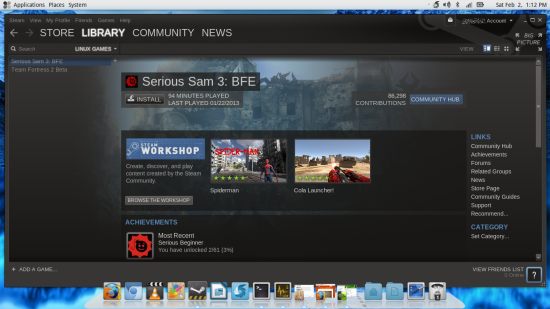
Before you judge me by the article title, please read carefully. I have a very important message, and it has everything to do with the commercial and public image success of Nokia, and Linux. We will begin with the former. To wit, here’s a brief introduction.
Introduction
In the early 2000s, Nokia was deemed the king of ergonomics. Its phones were designed with style, but more importantly, the operating systems and the menus were consistent, easily accessible and rather intuitive to users. As the smartphone market began to boom, Nokia chose a somewhat more conservative approach to design and user experience. Rather than oversimplifying the physical design, Nokia made a range of solid-build devices with a full QWERTY keyboard, similar to the RIM BlackBerry series.
I used to own a Nokia E71 device, and was rather pleased with it. When the time came to upgrade, I stayed loyal with the brand and purchased a Nokia E6 phone. This smartphone comes with a number of interesting features. Namely, it combines a full QWERTY keyboard marked in English, Hebrew and Chinese letters, a touch screen with a very decent 326ppi display density, and a sturdy stainless steel case. Even after almost a year of hard use, it has no dents or scratches, even though I have dropped it on the ground a few times. The battery life is also quite exceptional. While the manufacturer claims up to 30 days of standby time, I can easily go for about a week and a half of casual talking and text messaging without recharging.
Another bonus is the fully offline map service, based on Nokia OVI maps, which can be of great use abroad, without having to subscribe to an expensive data plan. You can download the maps at your own leisure, while at home or the office, connected to a free WLAN, and then use the device in the offline mode, relying only on the internal GPS. This method does take a bit of time to align the very first time, but it is quite accurate.
Data backup and sync is also a charm. The Nokia Suite, albeit available only for Windows, is a desktop application that lets you perform application and system upgrades, install software, sync your contacts, and backup your stuff. This is done using a simple interface, without any need for an Internet connection, with data saved in text archives.
Now, let’s take a look at a different kind of smartphone – Samsung Galaxy. This is the phone that my wife is using. It is a pure touch device, except for the three control buttons at the bottom of the front panel. It is loaded with the Android operating system, stock, vanilla, unrooted and unmodded. The notable features of this phone include an easily scratched surface, touch-only keyboard, and you must always be connected in order to perform data backups, which go to remote servers, owned by the operating system vendor. Sure, you can use third-party tools available in the Play store that may allow some level of offline backup & restore capability, but we are discussing the default support only, at this time. However, the biggest downside is the battery life. With the same level of use as the Nokia phone, this Galaxy offers only about one or two days of use before a recharging is needed.
As you can see, based on the features that I have focused on, it would appear that Nokia offers superior manufacturing and user experience technology. However, for some reason, Nokia is the not the leader in the smartphone market, it is Google.
Why?
There is another aspect to market success, and it has nothing to do with technology. It is the application space. When it comes down to offering users highly accessible and relevant content, Android wins hands down against Symbian. With Android, the critical availability of core applications that fulfill user needs is such that people will equate their phone usage with the operating system and what it gives, ignoring the subtle differences in the physical media and the software layer above it.
Nokia perhaps made a mistake to stick with its own unique operating system for its brand of devices, which might have become the limiting factor for its growth. Android is not limited to any one specific manufacturer, and this is what makes it so popular and accessible.
There are many problems, though. For example, there are few offline-only GPS programs available for Android. Sure, there are some, there will always be some, but not as simple, convenient or pretty as Nokia maps. You must be signed in on your phone with a Google account in order to be able to perform system upgrades and software installations. You cannot delete the primary account without root, and rooting can be quite a pain. Backups are clunky and full of privacy concerns. Lots of applications integrate advertisement banners that cannot be easily removed. The operating system is quite hungry for power, so it will drain your battery within hours. So yes, Google will hassle you, but it turns out, this is not what matters to users.
Technological superiority, or rather, technological mediocrity do not play a crucial role in users’ decision on what hardware and software they will use. Apple’s iPhone is another great example, which borrows the flaws from both Nokia and Google. You are hardware-locked, software-locked, and you are forced to go with whatever the vendor offers, like having to use a dedicated media program to sync your music. But the application space is so rich, flexible and useful that none of this really matters.
What I am trying to argue is the following: technology is important, and it is quite nice, but it does not go hand in hand with success. A great example that we can borrow from the automobile industry is the story of Lancia, as told by the Top Gear team. Lancia was the pioneer of tons of great technologies and features that you see in modern cars. Lancia Delta Integrale was the great champion of rallies, and one of the best hot hatches ever made. However, Lancia has long vanished from the car market, mostly because of bad marketing and mismanagement, its awesome breakthrough achievements notwithstanding. This is the story of Nokia, and here comes the story of Linux.
Enter Linux
Let us begin with a brief introduction. Linux has always been considered an operating system for advanced users. In the early 2000s, this was quite true, because you had to have a fairly decent knowledge of the system to be able to get a typical Linux distribution to work with your hardware. In recent years, though, Linux has improved the hardware compatibility so much that this one particular concern has become a non-issue. However, the bad boy reputation remains. More about that shortly.
Linux suffers from another problem, and that is the public awareness. Since there are few vendors offering Linux to the home user market, the Linux brand is not well known to average users. If you head into any standard computer store selling either hardware or software, you will rarely see a laptop loaded with Linux displayed on the shelves, or see Linux software being sold. The thing is, you do not need a store to sell you free software, right, but then, how do you expect common users to know about your products when all they have ever been exposed to is the standard, pay-for-goods model?
The third on the list is the diversity factor. The fact Linux is a highly moddable product, with a separation between the kernel and the application space, combined with the modify-as-you-please licensing, creates a rich variety of offerings, known as distributions. Making things even more complicated is that distributions are often incompatible with one another, and even previous versions of their own ilk. Thus, the question of Linux really becomes the nuance of what flavor of Linux people might want or need, burdened with stigma, little to no advertisement, and a confusing support model. But this is only the introduction, and not relevant to Linux success, or lack thereof.
The goodies
Let us talk about what Linux DOES offer. There are many things this kernel slash operating system offers, and the list is quite long. I will give you some details about both the commercial, enterprise space and the home market, separately.
In the business segment, Linux is highly desirable because of its relatively cheap licensing cost, although full-blown 10-year-support by the giants like RedHat and Novell does cost quite a bit of money. Another important factor is the clustering, high-availability and computational capability, which exceeds that of rival operating systems. You will notice that most world’s supercomputers run this or that variety of Linux. Most universities and research projects are executed on top of Linux. Top entertainment studio also use various Linux distributions to crunch their animations. For example, both Lord of the Rings series and Avatar were rendered using Linux.
The Linux kernel itself is a highly flexible beast, and it can be stripped down to bare bones, making it extremely usable for small, embedded devices. Most people would probably be surprised to learn that their car computers, routers, refrigerators, and other gadgets run Linux in this or that guise.
Let us deviate to the home market. Most Linux distributions are offered for free, which is quite nice. While most distributions are short lived, some vendors occasionally release Long Term Support (LTS) editions. For instance, Ubuntu 12.04 Precise Pangolin is going to be supported till 2017. ROSA Desktop comes with a similar concept, and so does the Scientific Linux, designed by the CERN team.
Most Linux distributions offer a bootable live CD/DVD edition, which any user can power on and test before deciding whether they want to commit the software to their machine. In the live sessions, users can test hardware compatibility, application space and other perks that suit their needs.
The natural and seamless separation between root and user helps increase security, as well as reduce the risks of accidental damage to the system. Performing system updates and upgrades is a breeze. Using a centralized facility called the package manager, with or without a frontend, Linux users can quickly and efficiently maintain their machines, without having to utilize a dozen manual installations, like they typically would on, say Windows.
Linux is also generally more generous when it comes to hardware requirements, and because of its underlying kernel architecture, it will often run faster on the same metal as an equivalent Windows, although this also depends on relevant drivers for the hardware. The efficiency also comes to bear in extended battery life, most of the time. Taking my recent exercise with Xubuntu, a flavor of Ubuntu graced with the lightweight Xfce desktop, which I installed on an Asus eeePC netbook, I managed to achieve a battery life of about 7.5 hours, and in the past, almost 9 hours. This is longer by at least a whole of two hours than the advertised battery life for Windows 7 Starter when this little device was new, some three years ago.
From the purely technological perspective, Linux is the Lancia Delta of the computing world. It is fast, lean, efficient, moddable to the limits of human fancy, cheap, and it offers great performance, decent security, and a very convenient application management method. All of these features should have made it the killer choice for your desktop and laptop. However, for some reason, this is not the reality.
Why?
So you may be asking yourself, how come, with all these wonders that Linux offers, is the market share of this awesome operating system still only about 2-3% of the total share? Just to clarify, we are only talking about the desktop, and we do not count embedded devices, the business segment, or Android, which also happens to be Linux. In fact, if we did, then the total market share of Linux more than doubles that of Windows.
What could be the reasons? The fragmentation? Well, it sure does not help, but it’s not that. Advertisement, public awareness? Nope, we discussed that earlier, it’s definitely not either one of those. What is it? The answer is quite simple – apps.
Applications
It is hard to understand and separate this one crucial little fact, but when you think about it, it becomes obvious. Apps. People are using Windows because of the applications they can use and run on Windows. True, today, people equate PC with Windows, and Windows with programs – the same thing that is beginning to happen with Android and the underlying smartphone and tablet devices. Frankly, people do not really care they are using Windows, but they do know they are using it, and this is what they want and expect. Technology is entirely meaningless here.
What makes things worse, so much worse, is the almost fatalistic dependency of people on the software they like and use. And it boils down to basically three ingredients – Microsoft Office, Adobe products, and games. Think about it. Most of the software in the this broad and mighty range is missing in the Linux space. And when someone cannot run their Word on Linux, everything else becomes moot. You may have a hundred other compelling reasons why Linux is great, a dozen alternative apps that are good but not quite, and a thousand other programs that do magic but mean nothing at all to the user.
I am the best example of this problem. Games. I’m a gamer, and most of my titles do not run on Linux yet, which means that I must have Windows installed on some of my boxes, or I would have to give up on some of my habits and uses, which is not acceptable. Technology is irrelevant here.
Will this ever change?
Well, it is already changing. Which is why Linux has failed so far, but the failure is not a perpetual state. You can fail many times, and keep failing, and you can also change the situation. Therefore, the emphasis is on the words, so far. Linux could and will probably became a key player in the home market, but what it needs to do is, conquer the app space. Plain and simple.
Canonical is doing a decent job here. It started with free CDs shipping worldwide, which helped raise awareness in the early stages of Ubuntu’s life. Then, Mark made some interesting decisions in partnering with other companies and game vendors, and offering content through the Ubuntu Software Center, which is an attempt to create an app-focused market for Linux. Recently, the cardinal decision by Valve to support Steam on Linux is another game-changing [sic] decision that will enable Linux to reach its market potential, and its technological superiority along.
Conclusion
So there you go, we come full circle. Nokia is not the dominant market leader despite some impressive technological achievements, because it has neglected the application space, and without apps, smartphones are just expensive bricks of plastic and metal. And it seems like it’s game over for Nokia.
Linux is undergoing a similar conflict. On one hand, it has everything you need to be the next big player. On the other, it is missing the few critical components that preclude it from exploding across the market, the few programs that people really want. However, the really good thing about Linux is, it is not a singular entity like Nokia. To use a cheesy, or rather, eggy idiom, putting all eggs in one basket is not the kind of risk that can happen to Linux. The technology does not depend on one company, and therefore, Linux has a very good chance of adapting and succeeding in the long term.
So we need apps. Once these evolutionary conditions are met, the evolution can begin. And then, the actual operating system becomes irrelevant. The name will stick, but as usual, the common user will do the regular mashup between hardware and software. At the moment, there is no Linux hardware giant, but the opportunities are so huge, this ought to happen soon. Maybe Ubuntu will be the leader, and it probably will, and no matter how much you may dislike the operating system, it could achieve what no other Linux has ever before, and that is bridging the app space for the common user.

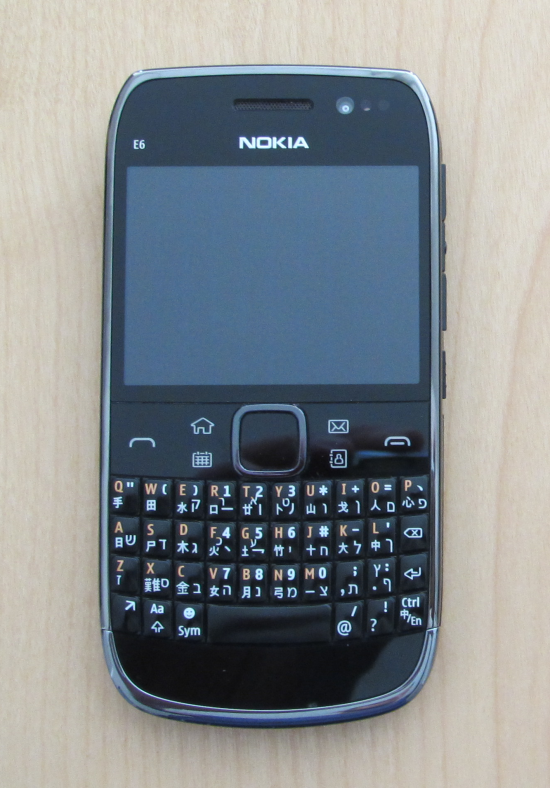
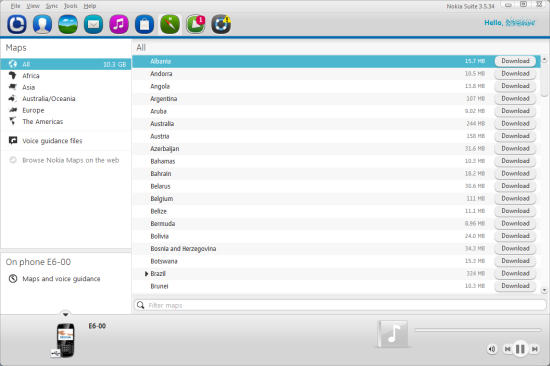
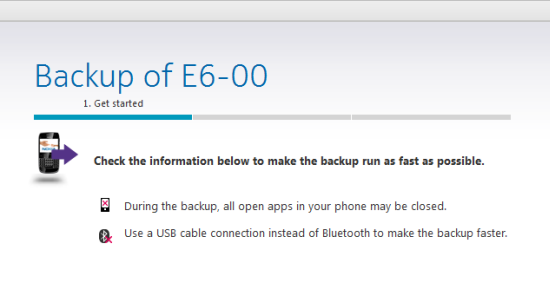
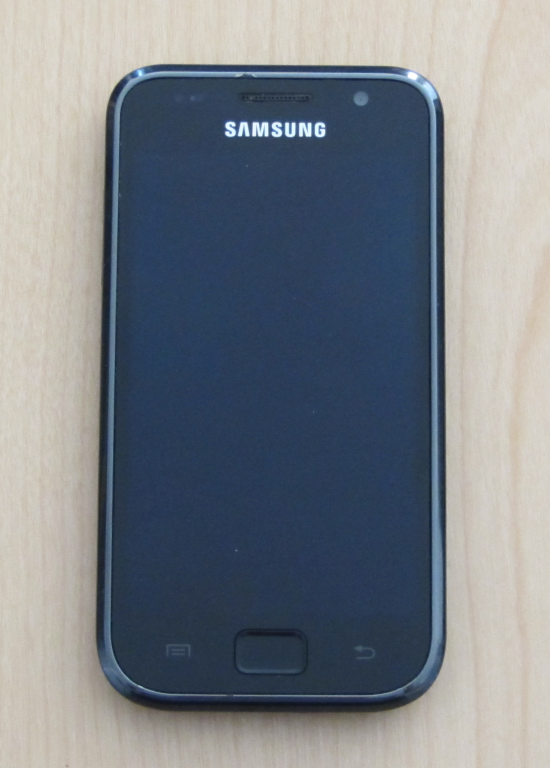
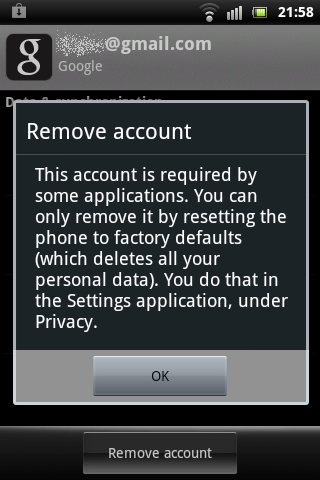
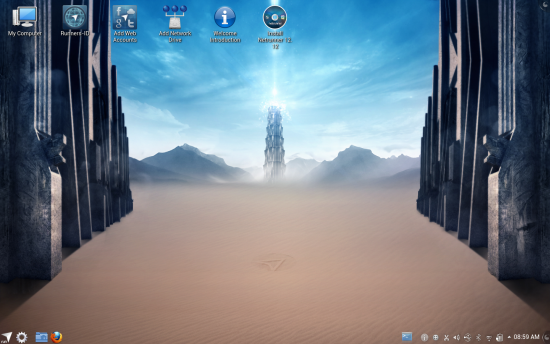
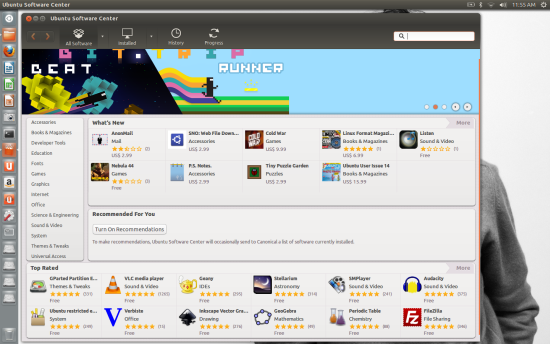
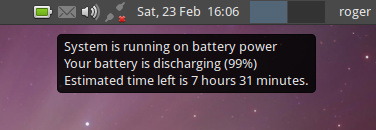


I like Ubuntu, I am an Ubuntu user since version 8.10 (Intrepid Ibex), I am running as of now version 12.04, and I believe Canonical is on the right track in pushing Linux into the mainstream consciousness. I think Shuttleworth understands exactly what you’re saying: it’s the Apps. Get the Apps and people will follow. Especially since the aim is to integrate the system across different medium, from the desktop to the tablet to the smatphone.
talking about app ! it’s the key !
lightworks pro video editor is coming to ubuntu linux so there’s some change coming ! :)
Windows 8 is doing it’s best to grab the smartphone market. Ubuntu’s Unity clearly is offering strong contender. Its all about making Linux a household name.
In a perfect world, the applications are all that the users should have to care about. The platform should really take the backseat. With Linux and open source STANDARD-BASED software, this is a real possibility. As for support from the platform (to the developers) this can be provided commercially by companies such as Canonical, but the advantage here is that with free software, it’s really easy to adapt and move on to alternatives.
well said dedo!
but i’d like to add a few points to the linux part. it’s about the overall polish, design standards and stability (of X and the application layer on top of it, we know kernel is in pretty good shape)!
As the popularity of web-based apps such as Gmail and Google Docs increases (as opposed to the entrenched Outlook and MS-Office on Windows and Mac only), so will the floodgates of Linux open onto the desktop. ChromeOS and Ubuntu are well poised.
Perhaps the only reason is that people who are making decision of office software (word processing, power point, spreadsheet computation etc…) are those living in old and tired world of 1990’s – a kind of Neanderthals in Redmond Gulag.
But when there is no money left people start to use their brains. Cities and schools- all over the old western world – have less money that believed before. Two decades they paid so much to Microsoft and got so little. Our so called IT world is far from effective. Actually it’s like a joke. The software should be free and open. Without that openness society won’t be innovative.
We are now living in a era very similar when modern humans came to Europe and Asia ( 50 000 years ago) and lived side by side with Neanderthals thousands of years. Linux and FLOSS are modern humans, Microsoft is the Neanderthal. Charles Darwin won’t have any problems to find who’s gonna won this battle of “survival of the fittest”. Neaderthal was strong but not so co-operative and innovative.
This isn’t even a war at all. As Ludwig von Mises
explained, the true story of the human race is the extension of
social cooperation and the division of labor. Peace, not war, is the
father of all things. And though many people don’t believe it, surely the best things in the world have always been done by community of people, not corporate and surely not because shareholder’s value. Science itself is based on values very similar to those of FLOSS and Linux. The future in long run looks gloomy and dark for Redmond.
Good article. There are however a few more things which could be mentioned about Linux in regards to areas of improvement. First and foremost are application delivery and dependency issues. For the most part, I cannot browse to a website, click to download a binary, save it locally, then run the installer. Most often there are dependency issues, certificate issues, etc., all of which require me to instead consume software from a package repository (that hopefully can satisfy all the dependencies for the particular piece of software I am interested in). And the repository model can be problematic as well. If for example I have multiple repositories configured, then problems will occur if an application or any of it’s dependencies reside in more than 1 repository. For a solution these kinds of problems, look to the Windows software delivery model or PCBSD. And don’t even get me started on the subject of video drivers, where after jumping through all the hoops required to get a kernel module driver installed, then my distribution decides to push out an update for X11, or a kernel update…and pooof. No more desktop, just a black screen. The second issue is application quality, and in this regard, Linux applications have much room for improvement. It’s not unusual to see a Linux application go from working well, to not working at all, from one distribution release to another, and sometimes even one application release to another. And finally there is the issue of documentation….usually there isn’t much. Again, here we can learn from Windows and the BSD’s.
I agree with you on one point : it’s the Apps … … … but I think you miss another important point : OS preinstallation
Imagine if Joe the plumber had to install say Windows 7 after buying a laptop … I think very few people would take the time (and work) to install a full blown OS by themselves … even though that great OS would offer many and very nice Apps.
So I agree it is the Apps … but OS preinstallations is on the critical path to reach … the Paradise ;-)
As for the apps in Linux, thankfully Steam could be solving it, if not by it self.
I enjoyed the article a lot. At last something smart about state of affairs in the world of linux.
I was surprised to know that it was written by Dedoimedo, a guy I thought to be one of the biggest braggers around.
Really, thanks for the article!
Bragger is good, bragger is reliable. Like in Snatch. No?
Dedoimedo
:)
oh, and my comments disappeared into oblivion, these people..
The elephant in the Linux room is money (and/or profit). If (when?) the public discover that they can keep their old laptops for years, run a choice of fast and slick operating systems with lots of standard applications for wp. spreadsheets, photos and audio, all for free – what happens to the profits? Not just for MS, but makers of hardware, add-ons, anti-virus software, all major software, and may others will suffer a massive drop in income; then there’s retailers, support companies, in fact a whole infrastructure where sales and profits will fall. I have put the Linux question to a number of large and small resellers of IT and their responses are notably consistent: Linux is very good but it will ruin their sales if they promote it. In fact, MS has spent much time and money talking down Linux; which is why Google called it Android – in a stroke they bypassed the MS disinformation campaign against Linux.
Then there’s Apple: they made the …X (non-Windows) world into a lifestyle choice for the well-off. Yes, there’s a bit of slick polish on the surface but underneath it’s still BSD and POSIX compliant; also disproving the MS claim that people would not and could not change from Windows. Apple does not sell products: it sells image and style, cool before anything else; but, as Frank Anderson says in these comments, when there is less money available things will change.
As for Nokia, they hired a new CEO ex-Microsoft – Doh! A marriage of convenience of 2 corporate dinosaurs, neither of whom can see that their worlds have changed forever. Dedoimedo’s points have some merit, and Nokia’s quickest route to apps is through Android; but they won’t get MS to agree to that.
In conclusion, a lack money and a consequent need to retain, reuse and recycle will perhaps give Linux a bigger boost than anything else; and once public knowledge and awareness of Linux gains sufficient momentum there will be no turning back.
You are close to the right answer … but not quite. Also, Nokia and Linux have different answers:
(1) Yes, Nokia failed because not enough apps … but why is this? Because the smartphone delivered a completely new gui for the user, enabling *many* more apps to be created. So the apps merely followed the path forged with this disruptive technology. By the time Nokia woke up, the horse had bolted. The reason they failed was they did not realise it was easier for developers to write for smartphones, and being able to do things unimaginable with a dumbphone.
(2a) Linux does not have Word, Excel, Powerpoint, Visio .. and Outlook. Its what everybody has to have to interchange properly. You have to have a Win OS to run these. And you need these because Microsoft rules this space.
(2b) You cannot buy a computer from the main hardware manufacturers without Windows, let alone with a supported Linux port. Microsoft has cleverly crafted contracts with the big iron makers .. to have them by the short and curlys. So you are always buying Windows everytime you buy a computer … perpetuating the status quo
I love my “steaming” pile of linux too! :D
I think a lot of people know that Linux is out there. Yet there are still many who are hesitant to try it, based on it’s reputation of being “the programmer’s OS”. Although one still should have some know-how to effectively run whatever flavor of Linux, it is really not that hard to use or learn how to use.
While it is true that more games and apps in general are coming to Linux, there are still too few. This, as stated in the article, is also hindering linux from becoming a major player. It is nice to see Steam on board but there are still very few offerings from major developers. Then again, a lot of developers look at the user base percentage and ask themselves if it is worth it to commit a team to a Linux port. Sort of a catch-22.
The same was happening with Macs a few years back. Yet, in the last few years, there has been a steady, flowing stream or river of software and game developers making Mac ports.
I do agree with the poster below, that stated, Windows comes pre-installed on most computers, so most people just stick with that. It’s sad, really. Yet, a lot of people like convenience and ease of use. Too many people are hesitant to try something where they would have to learn new things.